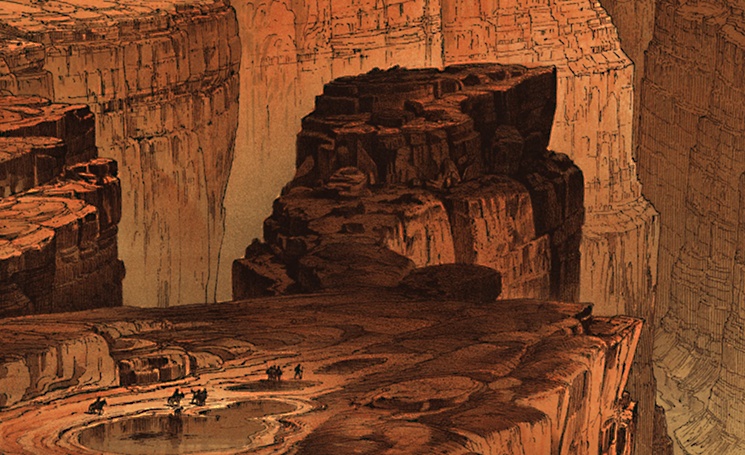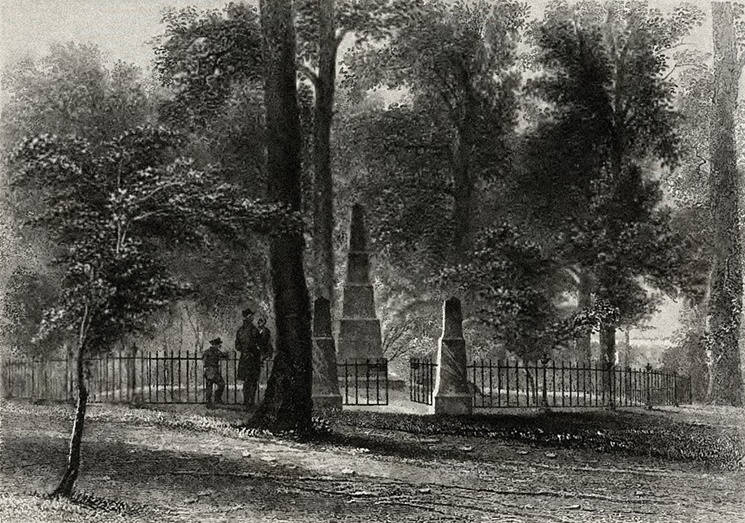Just Like Heaven
Experts answer what they know. The Non-Expert answers anything. This week we answer that eternal question: What happens after we die?
Have a question? Need some advice? Ignored by everyone else? Send us your questions via email. The Non-Expert handles all subjects and is written by a member of The Morning News staff.

Question: Is there an afterlife? —Matt
Answer: If you ever need to make your own Grand Canyon, start with a river and lift up the earth. As the ground rises the river will carry some of it away. Wait seven million years, at which point tourists will come. Some will see eons of erosion at work; others will believe that, a mere 4,500 years back, God dragged His fingernail across the desert. Like the group of evangelical-Christian creationists that rafted through in 2005. “One of the things it says to me,” a rafter was quoted as saying, “is I’m small and God and the world He created is huge. This is a man-dwarfing place.”
2.
Some things to see in the Canyon: rattlesnakes; Buddha Temple; burros; Confucius Temple; condors; Cremation Creek; and, in particular, Darwin Plateau.
3.
In Latin evolvere means “to unroll,” like a sacred scroll. The word “evolve” implies action. But evolution isn’t what happens; it’s what’s left over. Traits arise in populations; death sweeps through; some traits survive to the next generation. And repeat. Species don’t evolve—they erode. And the rock keeps lifting.
4.
Know The Canyon’s History, Study Rocks Made By Time. That is a mnemonic to help you remember the layers of the Canyon: Kaibab limestone, Toroweap formation, Coconino sandstone, and so forth. The mnemonic leaves out the Vishnu Schist, and makes no note of the Great Unconformity, which is not a layer but the absence of a layer. For an unconformity to form, one stratum is exposed and erodes (in this case for between 250 million and 1.2 billion years). Then new sediment is deposited and hardens, and the old layer is finally buried, after a gigayear in the sun. Eventually the ground lifts and erosion begins anew.
5.
After enough erosion you get tourists, 4.5 million a year, interested in the old rock. They ignore—because it’s long gone—the sediment washed away, but visit an old lady in a hogan to buy a blanket, a turquoise necklace, and a Kachina doll. Then they go home as citizens of a broader world, simultaneously humbled and embiggened, leaving behind empty water bottles.

6.
There is tourism for the body—a trip to the Jersey Shore or Ibiza, waterparks and nightclubs. Return relaxed, brain scooped. There is tourism for the mind—a walk through the Louvre, a visit to the Liberty Bell. The Grand Canyon is a little of each.
7.
So, too, a century or two ago, was Green-Wood Cemetery in Brooklyn, then second only to Niagara Falls as a New York tourist destination. Today you can take a trolley tour—but death trips aren’t what they used to be. Modern people don’t dawdle in graveyards, not unless there’s a hook. For instance: Last year I went to a dance performance at Green-Wood. Women in white moved about and struck poses among, and inside, the tombs, as others played accordion. An audience of several hundred walked from scene to scene. “My father and mother are here,” said a man to my right. “I’m enjoying this.” At the end of the show they asked for donations and I put $10 in the box.
8.
The neighborhoods around Green-Wood are worn out. There’s a bus depot on one side. In July I was riding my bike there, looking at monuments through the tall fence, when I ran over an empty penis-pump box, canceled postage attached. I stopped, between the graveyard and the buses, and tried to imagine what had happened: Someone pulled his (we can assume a man) car (we can assume a minivan?) into the furtive dark, next to the graveyard, and in anticipation and anxiety unboxed the device, tossed the packaging, and started the treatment. “Dude, dude, hey,” said the dead. “What are you doing?”
9.
But don’t pity the dead. They have time on their mouldering hands, and all they do is think of ways to vex us. They watch we living go about our dirty business—lying and cheating; penis-pumping; pirating pop music—and smile, amused, cool, indifferent, they’re like high-functioning heroin addicts, or cats. You want to get their attention, make them notice, shine a laser pointer on the ground and watch them scramble out of their graves. But that wouldn’t work, because nothing, no matter how you try, gets the dead’s goat. They’re the natives. We’re the tourists.

10.
Raised in the liberal Protestant youth-group tradition I understood hell as absence from God and heaven as a kind of communion. After death, I believed, you just would hang there in space, connected to everything else, wired into a reticulation of phosphorescent splines. No wings, no ghosts, nothing to resurrect.
11.
Joan Didion in The Year of Magical Thinking couldn’t throw away her dead husband’s shoes, for fear that he’d need them when he returned. After my grandfather died I used to fantasize that I could call him and he would answer. “Hey buddy,” he’d say. “I was just thinking of you.” But they changed the area code for that part of Pennsylvania, from 215 to 610, sold the house, and got rid of his clothes.
12.
He died in the mid-1990s, when there was much talk, as the internet emerged as a social force, of the imminent Singularity, the emergence of total intelligence. The human could be translated out of its body and into machines, free of the meat, of the flesh. We would hang there, wired into a reticulation of phosphorescent splines. “Cyberspace is where you are,” wrote John Perry Barlow, “when you’re on the phone.” When bloggers die their comment boxes are often filled with spam; sometimes the domain names expire; and, later, squatters take over. “Communication,” wrote William S. Burroughs, “must become total and conscious before we can stop it.”
13.
Last year I visited a friend in Rhode Island. We ate dinner in Providence. He told me his 82-year-old father was getting weak. And for himself: “I’m turning 40,” he said. “I didn’t expect all this.” He looked at his dinner plate. “Don’t laugh, but I was counting on the Singularity.”
14.
There are moments that come to me in the shower. Emotions combine in certain alchemical ways and bring upon me a desire to fall to my knees, heart pregnant with celestial fire. I am ready to subjugate myself to the sky sprites; prepared to say, “Not my will, but Thine.” But, sadly, I am apostate. I don’t believe.
15.
My mother lives in the panhandle of Maryland, near West Virginia. I visited her not long ago and we went to her small hilltop Methodist church. The service was halfway between evangelical (PowerPoint) and mainstream (hands clasped, not raised, in prayer). The minister spoke against internet pornography and warned of the unchecked rise of godlessness. Darwin was not in fashion there. The pews were half-full. When they passed the plate I put in $5. It’s not atheism keeping people at home.
16.
In their graceless state the godless are supposed to be allergic to places of terror and emptiness. Foxholes, Ground Zero, outer space—all locations, I’ve been told, where you won’t find atheists. “Clay is fashioned into vessels,” reads the 11th chapter of the Tao Te Ching (written 2,500 years after Noah’s flood carved out the Grand Canyon), “but it is on their empty hollowness that their use depends.”
17.
At the Canyon it’s the distances that make the picture. Seven million years of the river slicing open a billion years of rock, leaving thousand-foot drops; tens of millions of tourists, running their fingers over the surface, slowly buffing it to a gloss—ministers and geologists alike. The walls hold in the hollowness.
18.
One of Western culture’s great tourist stops is a poem about the surface of an urn:
19.
“Therefore,” concludes the 11th chapter of the Tao Te Ching, “what has a (positive) existence serves for profitable adaptation, and what has not that for (actual) usefulness.” Such as the space between letters, words, and paragraphs.
20.
I believe there is an afterlife. When we die we go to the Grand Canyon. There we hover in the vastness as soft pipes play. We become a useful emptiness above the green, blue, Red River; we become the thing that tourists cannot see. Natives.
